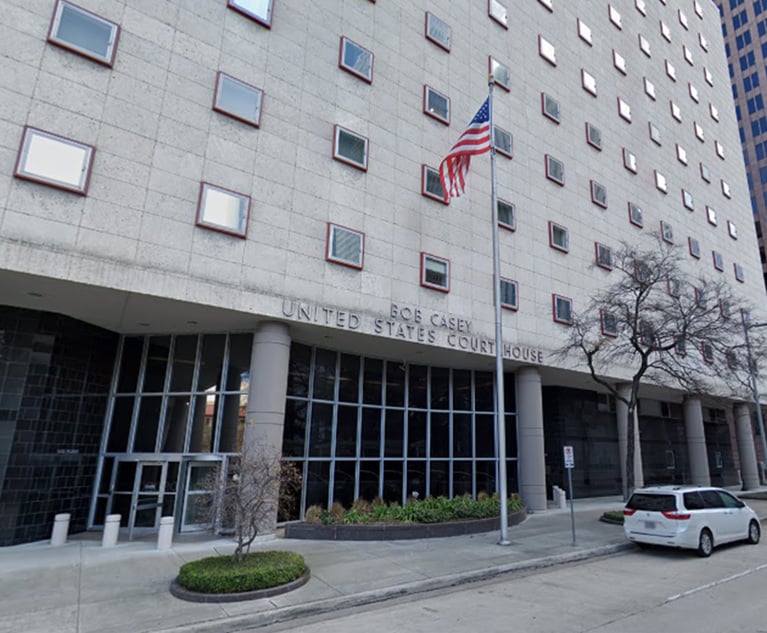Nortel Networks Bankruptcy Named Grand Prize Winner, Disputes, in Global Legal Awards
Resolving this sprawling cross-border insolvency took the best efforts of Herbert Smith, Goodmans, Cleary—and many more.
September 26, 2017 at 10:31 AM
6 minute read
Back in 2011, when insolvent Nortel Networks Corp. raised about $4.5 billion by selling off many of its patents in a groundbreaking auction, it seemed like very good news for the company and its creditors. The sell-off of the failed telecom technology company's businesses had brought in another $3.5 billion. “It was much more than could have been hoped for at the start,” says Herbert Smith Freehills litigation partner John Whiteoak, who represented Nortel's European arms.
Then things turned ugly, as the various parts of the defunct company battled each other for their share of the proceeds. “There's only one thing worse than a bankruptcy with not enough money,” says Jay Carfagnini, head of the restructuring practice at Toronto's Goodmans, who represented the monitor for the Canadian debtor, Ernst & Young Inc. “That's a bankruptcy with too much money.” The fight involved multiple mediations; a 21-day trial held simultaneously in American and Canadian courts via video link; almost $2 billion paid out in legal and other professional fees; and finally, in 2016, settlement. The Nortel saga, says bankruptcy partner James Bromley of Cleary Gottlieb Steen & Hamilton, counsel to the U.S. debtor, “is probably one of themost complicated international insolvencies to ever occur.”
At the time of its bankruptcy in 2008, Nortel had about 30,000 employees in 39 different companies around the world. It spawned three bankruptcy main estates: in Canada, where Nortel was headquartered; in the United States; and in the United Kingdom and Europe. Nortel's business lines, which included wireless and ethernet networking products, spanned national borders and individual subsidiaries; they were so intertwined that early on the Nortel estates and their representatives came to a fateful decision. To maximize returns, Bromley says, “we came to the conclusion that it made sense to sell the businesses to raise money and fight over how to divide up the money later.”
This content has been archived. It is available through our partners, LexisNexis® and Bloomberg Law.
To view this content, please continue to their sites.
Not a Lexis Subscriber?
Subscribe Now
Not a Bloomberg Law Subscriber?
Subscribe Now
NOT FOR REPRINT
© 2025 ALM Global, LLC, All Rights Reserved. Request academic re-use from www.copyright.com. All other uses, submit a request to [email protected]. For more information visit Asset & Logo Licensing.
You Might Like
View All
Topping Kirkland, Weil Won the Most Valuable Major Bankruptcy Retentions of 2024

Cleary vs. White & Case: New York City Showdown Over $5 Billion Brazilian Bankruptcy
Trending Stories
- 1Stevens & Lee Names New Delaware Shareholder
- 2U.S. Supreme Court Denies Trump Effort to Halt Sentencing
- 3From CLO to President: Kevin Boon Takes the Helm at Mysten Labs
- 4How Law Schools Fared on California's July 2024 Bar Exam
- 5'Discordant Dots': Why Phila. Zantac Judge Rejected Bid for His Recusal
Who Got The Work
Michael G. Bongiorno, Andrew Scott Dulberg and Elizabeth E. Driscoll from Wilmer Cutler Pickering Hale and Dorr have stepped in to represent Symbotic Inc., an A.I.-enabled technology platform that focuses on increasing supply chain efficiency, and other defendants in a pending shareholder derivative lawsuit. The case, filed Oct. 2 in Massachusetts District Court by the Brown Law Firm on behalf of Stephen Austen, accuses certain officers and directors of misleading investors in regard to Symbotic's potential for margin growth by failing to disclose that the company was not equipped to timely deploy its systems or manage expenses through project delays. The case, assigned to U.S. District Judge Nathaniel M. Gorton, is 1:24-cv-12522, Austen v. Cohen et al.
Who Got The Work
Edmund Polubinski and Marie Killmond of Davis Polk & Wardwell have entered appearances for data platform software development company MongoDB and other defendants in a pending shareholder derivative lawsuit. The action, filed Oct. 7 in New York Southern District Court by the Brown Law Firm, accuses the company's directors and/or officers of falsely expressing confidence in the company’s restructuring of its sales incentive plan and downplaying the severity of decreases in its upfront commitments. The case is 1:24-cv-07594, Roy v. Ittycheria et al.
Who Got The Work
Amy O. Bruchs and Kurt F. Ellison of Michael Best & Friedrich have entered appearances for Epic Systems Corp. in a pending employment discrimination lawsuit. The suit was filed Sept. 7 in Wisconsin Western District Court by Levine Eisberner LLC and Siri & Glimstad on behalf of a project manager who claims that he was wrongfully terminated after applying for a religious exemption to the defendant's COVID-19 vaccine mandate. The case, assigned to U.S. Magistrate Judge Anita Marie Boor, is 3:24-cv-00630, Secker, Nathan v. Epic Systems Corporation.
Who Got The Work
David X. Sullivan, Thomas J. Finn and Gregory A. Hall from McCarter & English have entered appearances for Sunrun Installation Services in a pending civil rights lawsuit. The complaint was filed Sept. 4 in Connecticut District Court by attorney Robert M. Berke on behalf of former employee George Edward Steins, who was arrested and charged with employing an unregistered home improvement salesperson. The complaint alleges that had Sunrun informed the Connecticut Department of Consumer Protection that the plaintiff's employment had ended in 2017 and that he no longer held Sunrun's home improvement contractor license, he would not have been hit with charges, which were dismissed in May 2024. The case, assigned to U.S. District Judge Jeffrey A. Meyer, is 3:24-cv-01423, Steins v. Sunrun, Inc. et al.
Who Got The Work
Greenberg Traurig shareholder Joshua L. Raskin has entered an appearance for boohoo.com UK Ltd. in a pending patent infringement lawsuit. The suit, filed Sept. 3 in Texas Eastern District Court by Rozier Hardt McDonough on behalf of Alto Dynamics, asserts five patents related to an online shopping platform. The case, assigned to U.S. District Judge Rodney Gilstrap, is 2:24-cv-00719, Alto Dynamics, LLC v. boohoo.com UK Limited.
Featured Firms
Law Offices of Gary Martin Hays & Associates, P.C.
(470) 294-1674
Law Offices of Mark E. Salomone
(857) 444-6468
Smith & Hassler
(713) 739-1250











